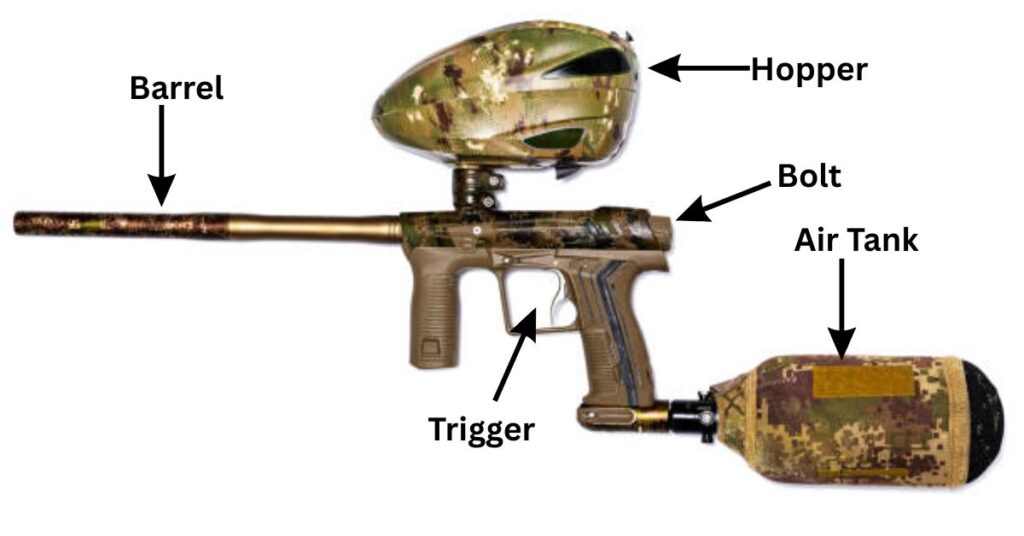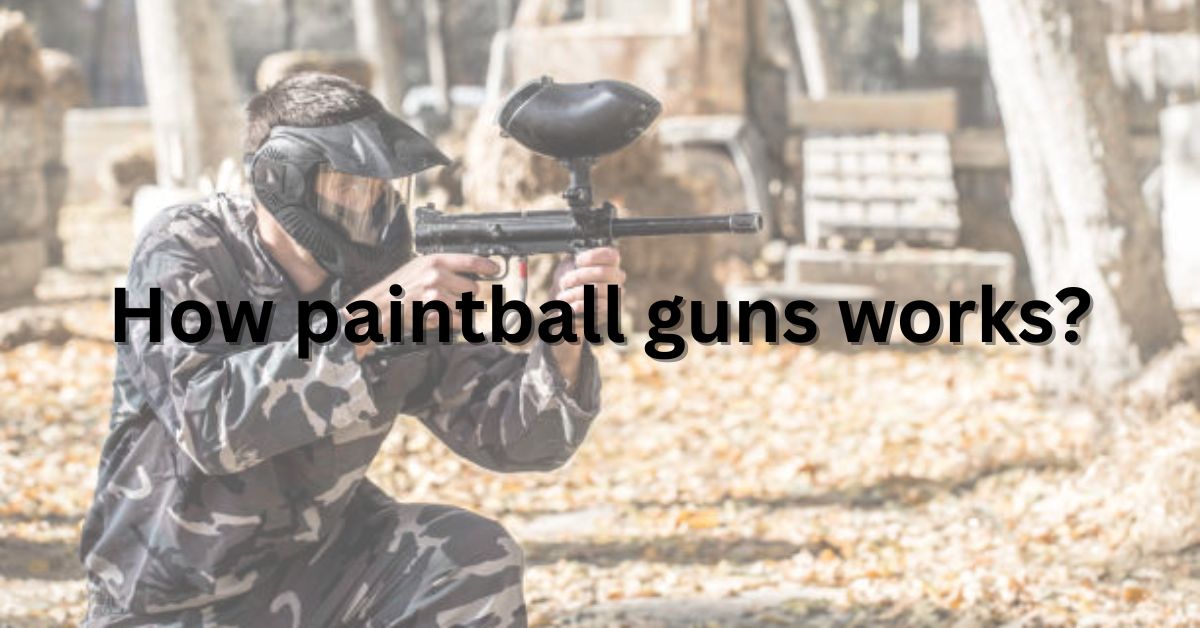Paintball is more than just splattering color—it’s a game of precision, adrenaline, and mechanical genius. Whether you’re a new player or a curious techie, understanding how paintball guns work helps you play better, shoot smarter, and maintain your gear like a pro.
Let’s take a closer look at how paintball markers work and discover what makes those high-speed bursts of fun possible.
Paintball guns—also known as paintball markers—are the heart of the sport. They may look intimidating at first glance, but once you understand the basic mechanics, they’re fascinating pieces of engineering.
In this guide, we’ll explore the parts of a paintball gun, how they work together, and how air and pressure are used to fire paintballs accurately and safely.
Basic components of a paintball gun
Every paintball gun is built with a few core components, each serving a unique role in the firing process:
Key parts:
- Hopper: Holds and feeds paintballs into the firing chamber
- Barrel: Directs and stabilizes the paintball as it exits
- Trigger: Controls the firing mechanism
- Bolt: Moves the paintball into the firing position
- Air Tank (CO₂ or HPA): Provides the compressed gas to shoot the paintball

Understanding these elements makes it easier to diagnose issues, clean your gun, or even upgrade parts for better performance.
Types of paintball guns (Markers)
Not all paintball guns are equally created. There are several types to suit different play styles:
Mechanical Markers
- Runs without electricity
- Reliable and low-maintenance
- Perfect for beginners and casual players
Electronic Markers
- Powered by batteries and circuit boards to control firing
- Multiple firing modes available (burst, auto, etc.)
- Higher rates of fire for competitive gameplay
Pump-Action Markers
- Require manual cocking before each shot
- Great for accuracy-focused or old-school players
The firing process:
Here’s a simplified step-by-step of how a paintball gun fires:
- The hopper drops a paintball into the firing chamber
- You pull the trigger, activating the bolt
- The bolt seals the chamber and releases a burst of compressed gas
- The gas propels the paintball through the barrel
- The paintball exits at speeds of up to 280–300 feet per second (fps)
The result? A splat of color—ideally on your target, not yourself.
Air Systems: CO₂ vs. HPA (High-Pressure Air)
Paintball guns need compressed gas to function. You typically have two options:
CO₂ Tanks
- Widely available and inexpensive
- It can be affected by temperature and pressure fluctuations
- Good for beginner and mid-range setups
HPA Tanks (Compressed Air)
- Deliver consistent pressure
- Better performance in cold weather
- Preferred by serious and competitive players
- More expensive, but better long-term
Fun fact: Some advanced markers won’t function properly without HPA due to their design.
Firing Modes and Rate of Fire
Modern paintball markers can do more than shoot one ball at a time.
Common Modes:
- Semi-Automatic: One ball per trigger pull
- Burst Fire: Shoots 3–5 balls per trigger pull
- Fully Automatic: Continuous fire while holding the trigger
Electronic markers let you switch between modes, manage the rate of fire, and even adjust shot timing for different game types.
Safety mechanisms:
Safety is key when dealing with any projectile-firing device—even paintball markers.
Built-in safety features:
- Barrel Covers: Block accidental shots when not in play
- Trigger Locks: Prevent unintended firing
- Velocity Adjusters: Let you control shot speed (typically capped at 280–300 fps for safety)
Wearing protective gear like goggles, gloves, and padding is always recommended—and often required by fields.
Maintenance and Care
A clean marker is a happy marker. Regular maintenance extends the life of your gun and keeps your shots consistent.
Maintenance Tips:
- Clean the barrel and bolt after each session
- Oil O-rings and moving parts
- Inspect for air leaks or worn seals
- Store your air tank properly and never fully pressurize for long periods
Some simple maintenance can go a long way in preventing jams, misfires, or worse—mid-game breakdowns.
Conclusion:
So, how do paintball guns work?
Well, it’s all about the combination of air pressure, precision mechanics, and clever design.
From the hopper to the barrel, every piece plays a role in sending a paintball flying toward its mark. Whether you’re using a basic mechanical marker or a high-end electronic beast, understanding your gear makes you a smarter, more efficient player.

